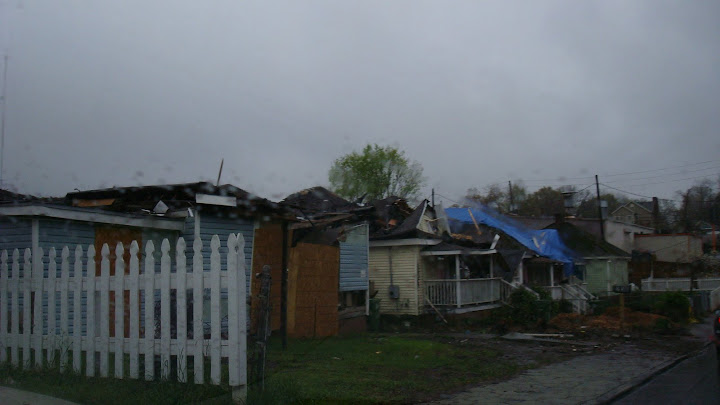Hurricane Ivan, which struck U.S. shores September 15, 2004, kicked up the tallest, most extreme waves ever measured, scientists announced today.
At more than 90 feet (27 meters) tall from crest to trough and 600 feet (183 meters) long, the massive waves would "wipe out" a commercial fishing boat, said Douglas Mitchell. Mitchell is an oceanographer with the U.S. Naval Research Laboratory at the Stennis Space Center in Mississippi. he researchers estimated the wave heights using water pressure data from undersea sensors that had been placed in the Gulf of Mexico for a separate project. "Have you seen The Perfect Storm?" Mitchell said when asked to describe the extreme waves. The reference is to the Hollywood movie based on Sebastian Junger's best-selling book about an October 1991 storm in the Atlantic Ocean. In the movie, waves the size of ten-story buildings swamp a 70-foot long-liner (a type of fishing boat) and its six-person crew. Mitchell and Naval Research Laboratory colleagues David Wang, William Teague, Ewa Jarosz, and Mark Hulbert report their findings in tomorrow's issue of the journal Science.
The tallest measured wave was 91 feet (28 meters). The researchers believe they likely missed even larger waves because their sensors shut down before the most powerful region of the storm passed over them. "If we had been fortunate enough to sample the waves when peak winds were overhead, we'd expect to have seen waves in excess of 130 feet [40 meters] from crest to trough," team member William Teague said. At its peak intensity, the hurricane was a Category Five storm—the most powerful—with sustained winds of 161 miles an hour (259 kilometers an hour). Hurricane Ivan tore a deadly path across the Caribbean and Gulf of Mexico in 2004. It struck the Gulf Coast on September 15 with 130 mile an hour (209 kilometer an hour) winds and was directly resposible for 92 deaths. But the extreme waves disintegrated in the choppy waters of the Gulf of Mexico, never making landfall.
Extreme Waves
The Naval Research Laboratory team obtained their wave measurements when Ivan passed directly over a series of six concrete-ringed instrument packages deployed on the ocean floor about 75 miles (121 kilometers) south of Gulfport, Mississippi. Scientists call these moorings "barnys" because they are shaped like barnacles. The barnys, which sat at depths between 196 and 295 feet (60 and 90 meters), collect current and water pressure data. They were placed in the gulf for a six-month-long project to form a comprehensive profile of the region's currents, Mitchell said. The timing and passage of the hurricane directly over the sensors was a fortuitous coincidence, Teague said.
An added bonus is that all the instruments survived the storm. The scientists calculated the wave heights from the changes in water pressure recorded by the sensors as waves passed overhead. "As waves go by, the pressure rises and falls," Teague said. To last for the six-month ocean current project, the barnys' batteries were designed to turn on for 8.5 minutes every 8 hours—long enough to record the passage of about 50 waves. Even though the barnys' operational time was staggered, none of the sensors were on when the strongest part of Ivan passed overhead.
Wave Science
cientists know little about the biggest ocean waves because most attempts to measure them have failed. For example, wave-measuring equipment attached to oil-drilling platforms often snaps off before a storm peaks. Prior to Ivan, computer models of wave formation during a hurricane suggested that monster waves topping 90 feet (27 meters) tall were rare. Thanks to the fortuitous placement of the barnys, this assumption is beginning to change. "The implication is waves generated by hurricanes are much larger than previously suspected.
Waves in excess of 90 feet aren't rogue but are fairly common during hurricanes," Teague said. According to team member David Wang, these insights will allow scientists to create better computer models of hurricane impacts. Such models, for example, could prompt engineers to build sturdier oil-drilling platforms. "The models can only be as good as the data provided," Wang said. "And we always want more [data]. There's more to be learned about how waves do form under hurricanes."
WEATHER NOTE
Storm chaser Bob Wade of Wisconsin sends us a couple of pix's of the twister damage to downtown Atlanta and Cabbage Town.
RS



















![Validate my RSS feed [Valid RSS]](valid-rss.png)
No comments:
Post a Comment